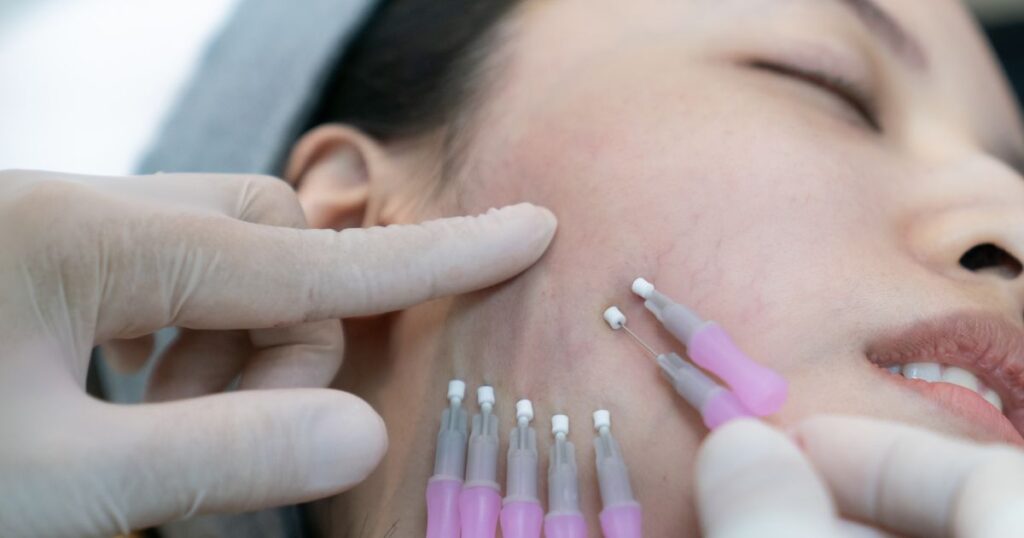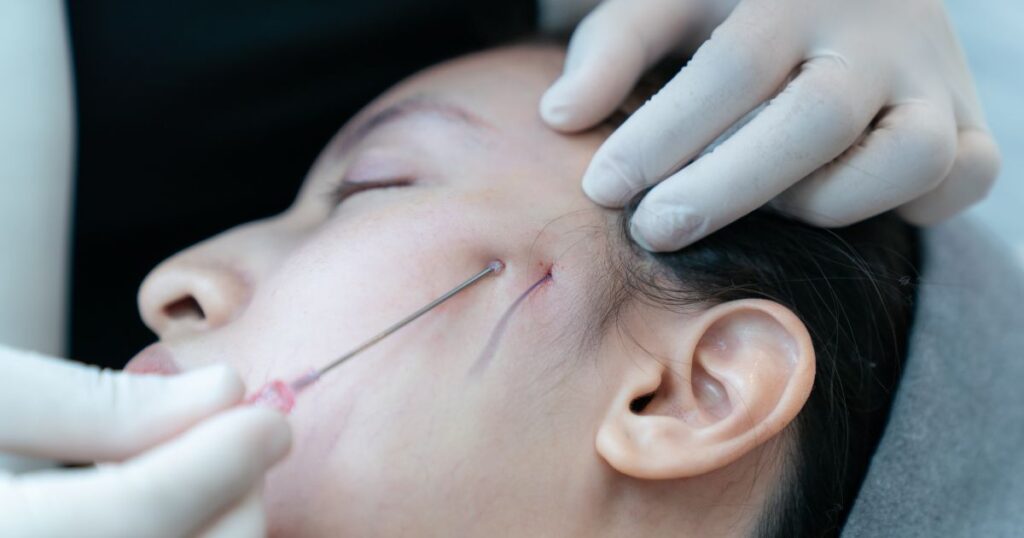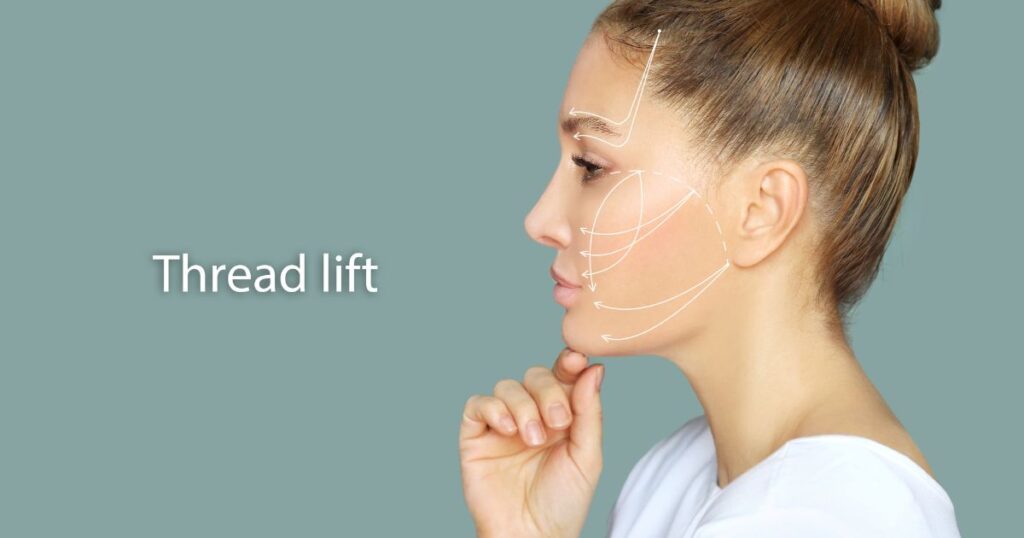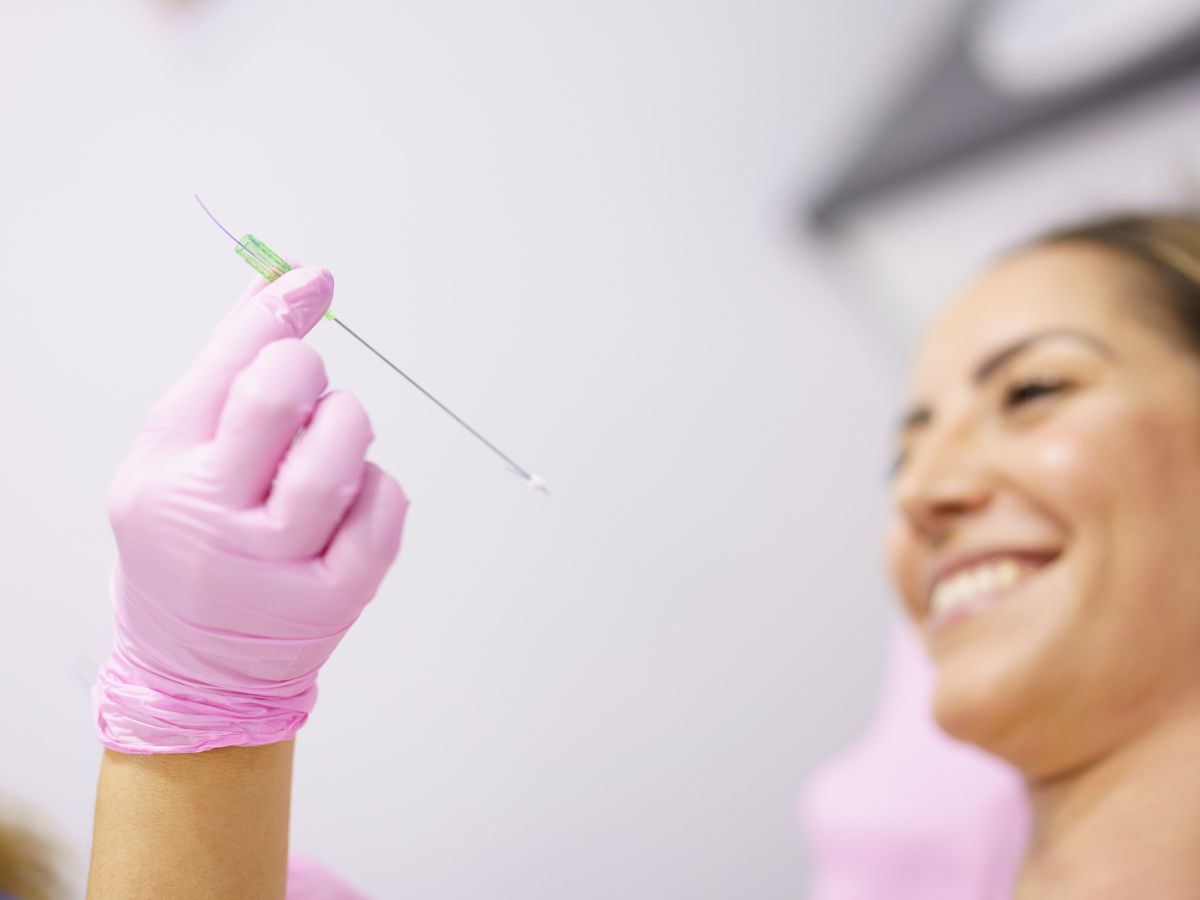The PDO thread lift is fairly new and relatively unknown, although this procedure is quickly gaining popularity among Hollywood celebrities and in the media. This procedure carries with it a variety of pros and cons, and potential patients should be aware of this before having a consultation to decide whether or not the risk associated with the PDO thread lift is worth taking. So, do you want to know about the benefits of PDO thread lift? Well, in this article we’re going to take a closer look at how and why the medical community is praising this treatment.
PDO Thread lift…What is it?
PDO thread lift is coming to your world, what is it? A PDO is an abbreviation of “poly-directional fiber”, and PDL (Poly-Directional Linear) refers to the process by which it’s created.
The whole technique is based on the concept that you MUST need a firm intra-structure to retain the structure of the building. The same is the case for your skin which needs new collagen fiber to maintain its elasticity and youthful appearance.
After all, you can’t build a semisolid design without using fibers. PDO thread lift is a new and advanced technique of skin rejuvenation that has been used to reduce the appearance of nasolabial folds (smile lines) and was created by plastic surgeon Alberto Baille. It is an effective treatment for the removal of smile lines, lower lip enhancement, upper lip enhancement, and chin augmentation. PDO thread lift avoids creating any permanent scars on your face and makes it more hygienic than with other types of plastic surgery
Procedure Of PDO Thread Lift?

You are suggested to avoid tobacco and alcohol for at least 5 days before your procedure to decrease the risk of bleeding.
The complete procedure of PDO thread lift involves the following step that may be slightly different due to changes in the working of surgeons and locations.
- Your dermatologist or surgeon will disinfect your face with alcohol as you recline on a chair. A needle will be used to inject a local anesthetic under your skin.
- An additional needle will be used by your surgeon to create a small incision, and the cannula will be inserted into the hole.
- The cannula will be removed when your surgeon secures the thread in place.
- After making sure the thread is securely positioned, they will snip it.
- Right after the surgery, you will be allowed to leave for home.
Benefits
PDO threads are the most common sutures that are successfully used in facelift procedures with effective results. These PDO Threads trigger specific cells in your body called fibroblasts for more collagen production. You must note that collagen is a protein that maintains skin structure and elasticity. One of the major reasons for aging is the loss of collagen.
PDO threads and sutures
Risks And Side Effects
In comparison to other facelift surgeries, PDO bread lifts have a much lower risk of complications. The common after-effects include
- Redness
- Bruises
- Minor bleeding
- Scarring
Other complications include
- Pain
- Infection
- Inflammation
- Dimpling
- Visible sutures
Types Of PDO Thread

The three common types of PDO threads are
- PDO mono threads: These are the smooth sutures that stimulate collagen formation to rejuvenate the skin.
- PDO cog threads: These are threads with barbs that anchor in your skin like small hooks and help to lift the part of your face.
- PDO screw threads.: These threads are composed of one or two intertwined threads and work to restore the sunken part of the skin.
Other Types Of Thread Rather Then PDO
The PDO threads work best for thread lift but two other types of threads are also well-known for this procedure namely PLA and PCA.
. PCA takes between 12 and 15 months to absorb, while PLA threads absorb in roughly 12 months.
Each kind of thread is more effective for a specific purpose. While PLA and PCA threads are better at elevating drooping areas of your skin, PDO threads are excellent at repositioning and rejuvenating tissue.
This can be summarized in form of the table below
| Aim Of Procedure | Thread That fits best for it |
| Skin tightening or rejuvenation | PDO mono |
| Medium level facelift | PDO cog or screw |
| Improvement in elasticity | PLA or PCA |
| Prominent facelift | Facelift surgery |
Recovery time
The thread lift procedures take minimum time to recover. Generally, there is minor swelling and bruises that vanish within 24 to 48 hours. You can return back to your daily activities after 2 to 3 days.

Aftercare
The week following your surgery, you should try to avoid rubbing your face as much as you can to prevent accidentally displacing the thread. For the first few weeks, you’ll also probably be told to refrain from smoking, sipping via a straw, and pursing your lips.
Along with them, you might want to abstain from vigorous exercise, sauna visits, and side sleeping for one to two weeks.
Avoiding unintentionally rolling onto your face in the middle of the night might be made easier by sleeping with your head raised up on a pillow.
Cost of Thread Lift
The total cost of this procedure totally depends on your location, the extent of your procedure, and the surgeons’ experience.
The expected cost of this procedure is from $500 to more than $5,000. PLA and PCA threads are slightly more expensive.
As it is a cosmetic procedure so your insurance plan won’t cover it but some clinics offer flexibility in payments by spreading prices over months.
Final Note
PDO thread lift is an effective treatment for loose or sagging skin. It works by restoring volume in areas where there has been a loss of elasticity. This thread lift will offer you a natural enhancement for your skin, which offers long-term results without surgery. This procedure carries with it a variety of pros and cons, and potential patients should be aware of this before having a consultation to decide whether or not the risk associated with the PDO thread lift is worth taking








